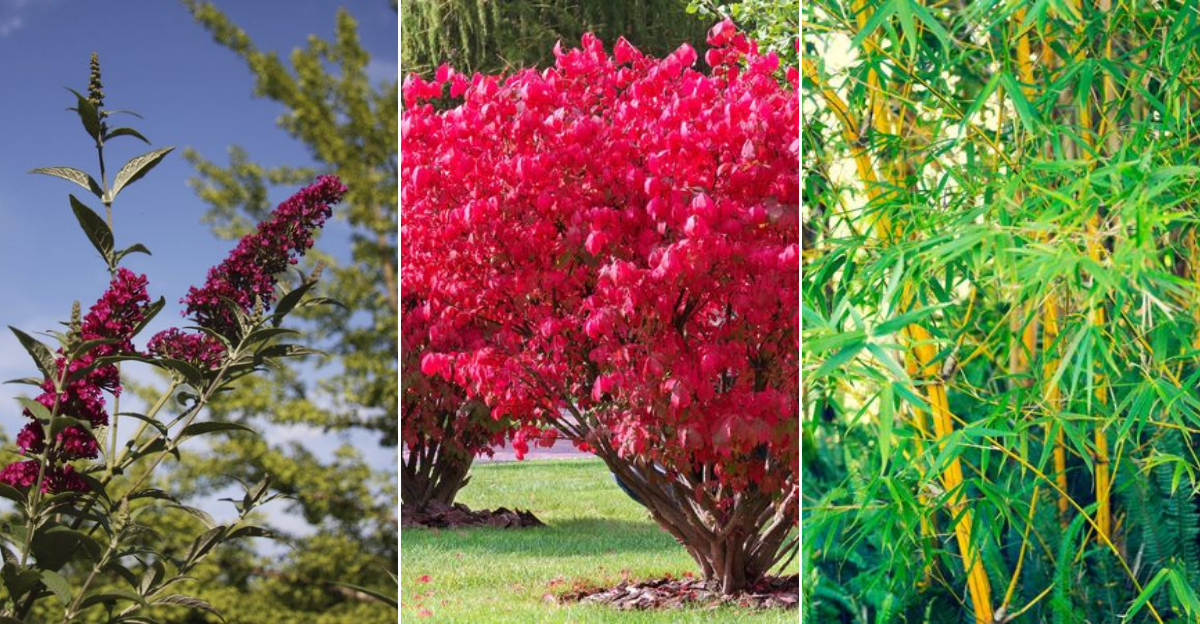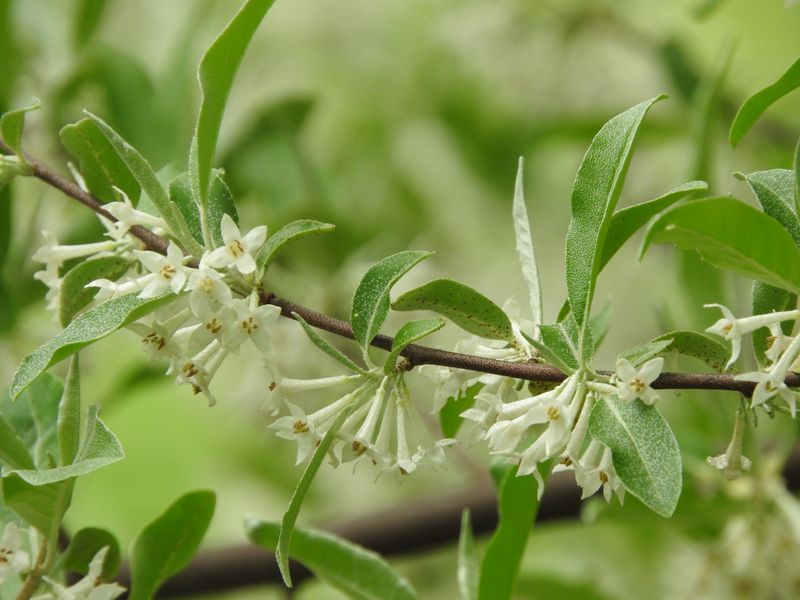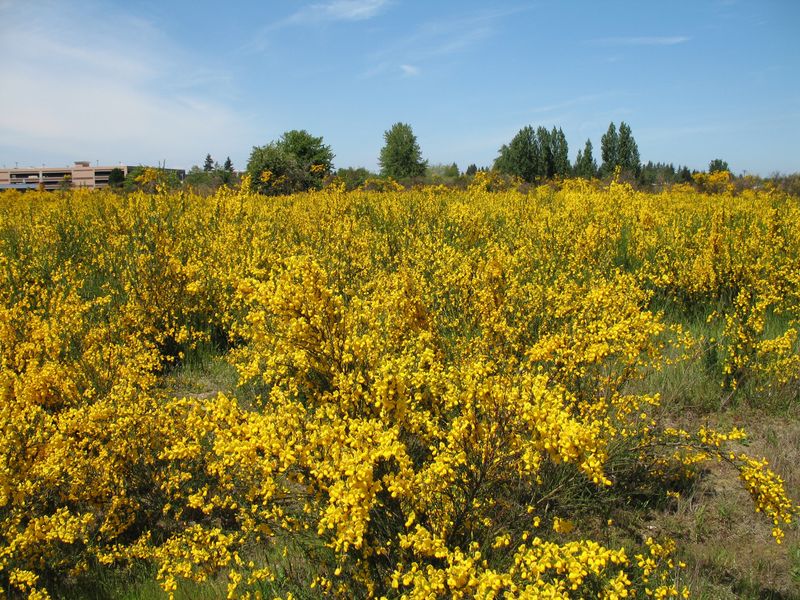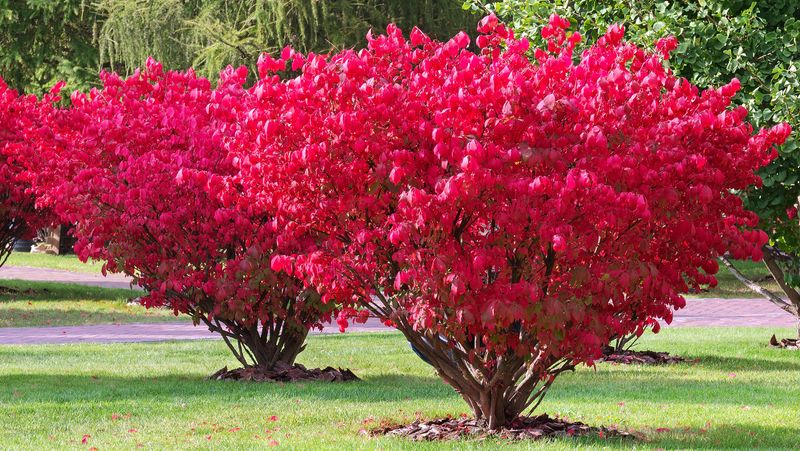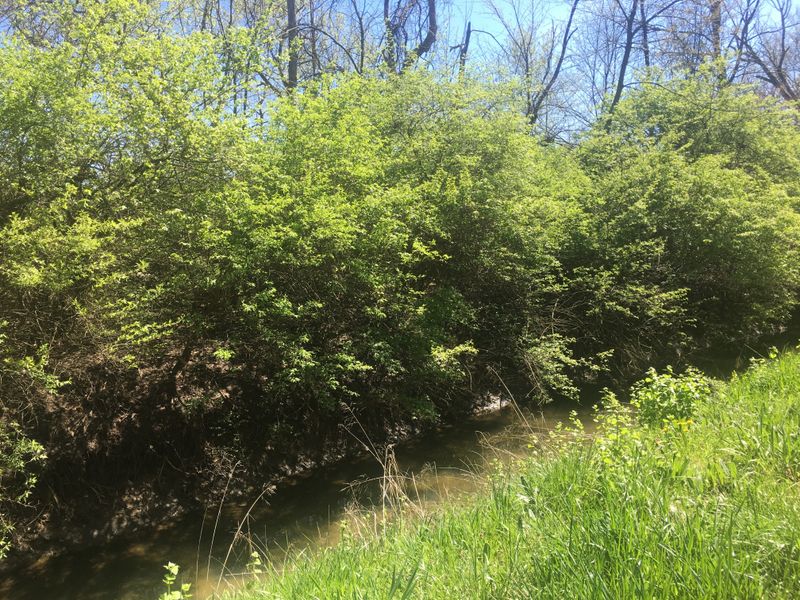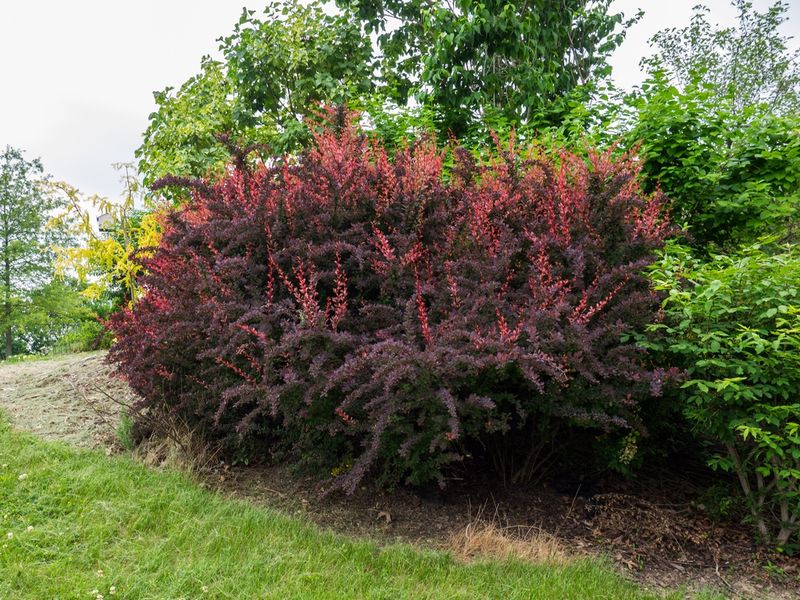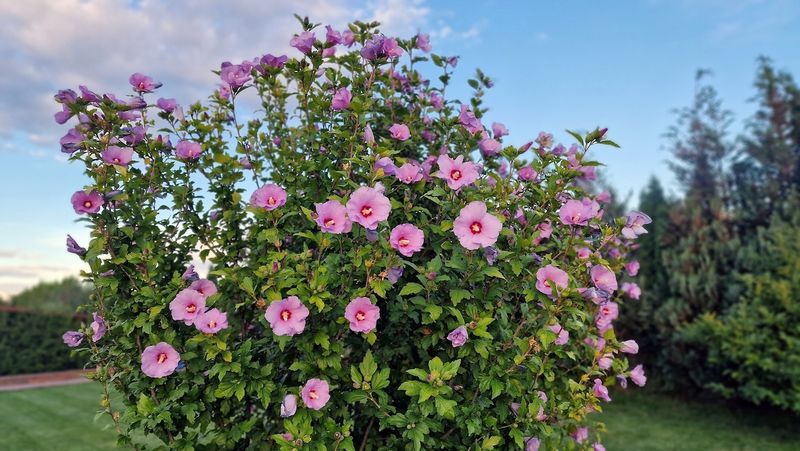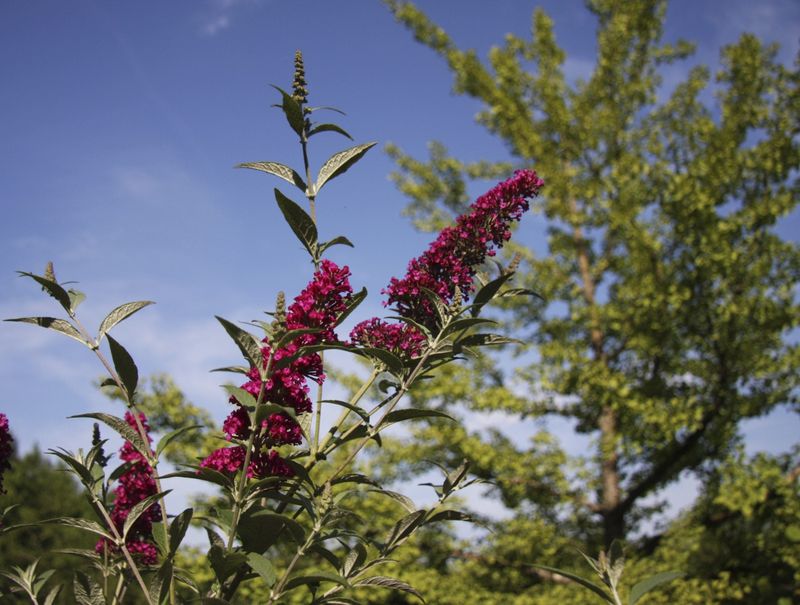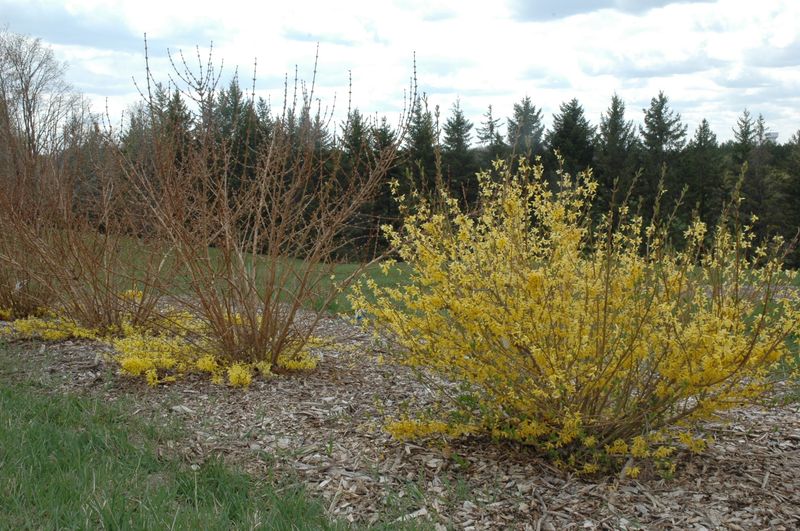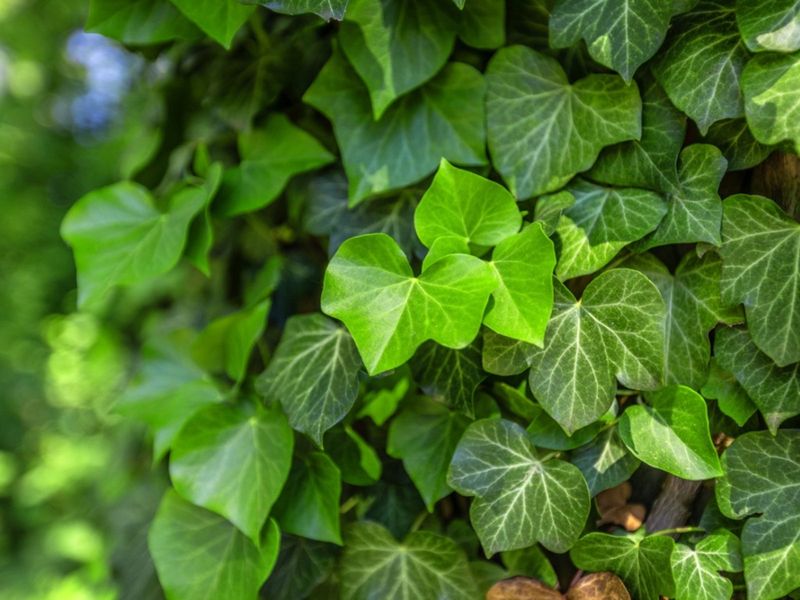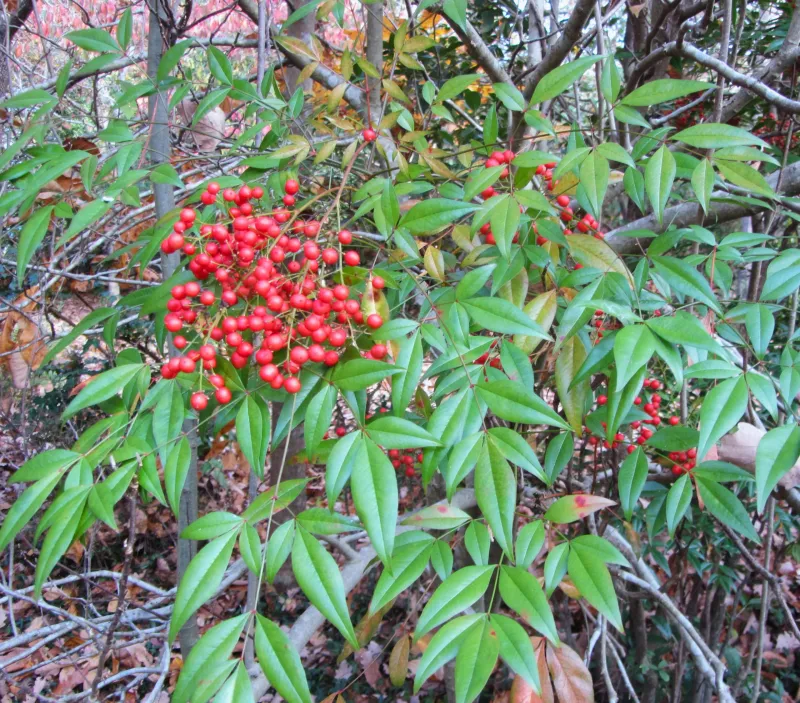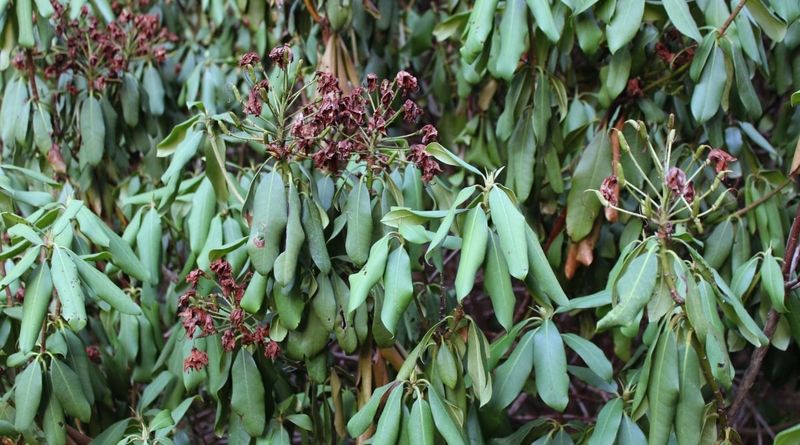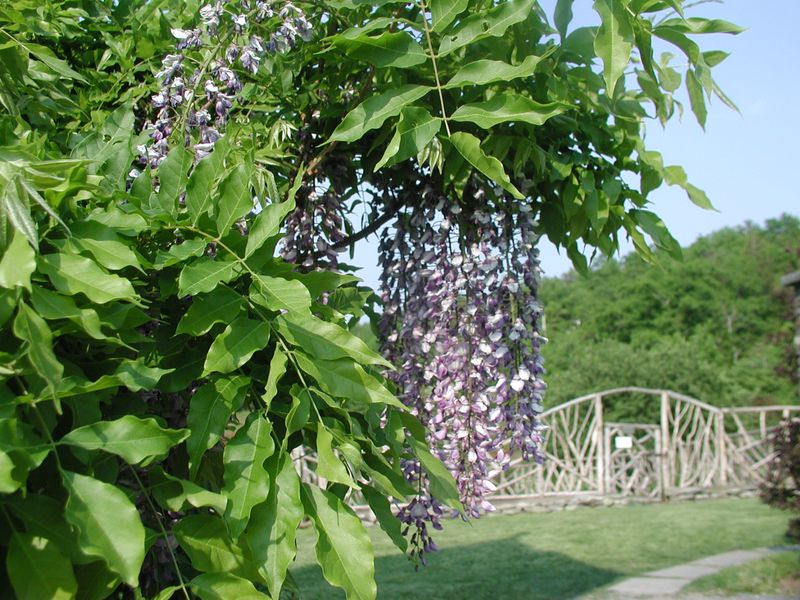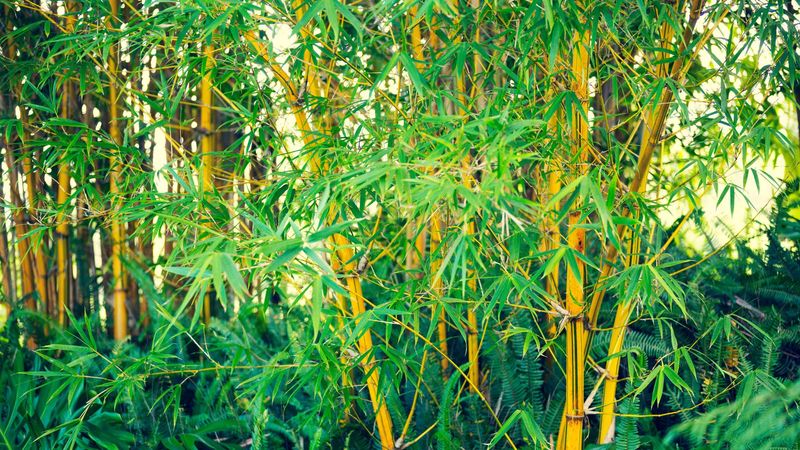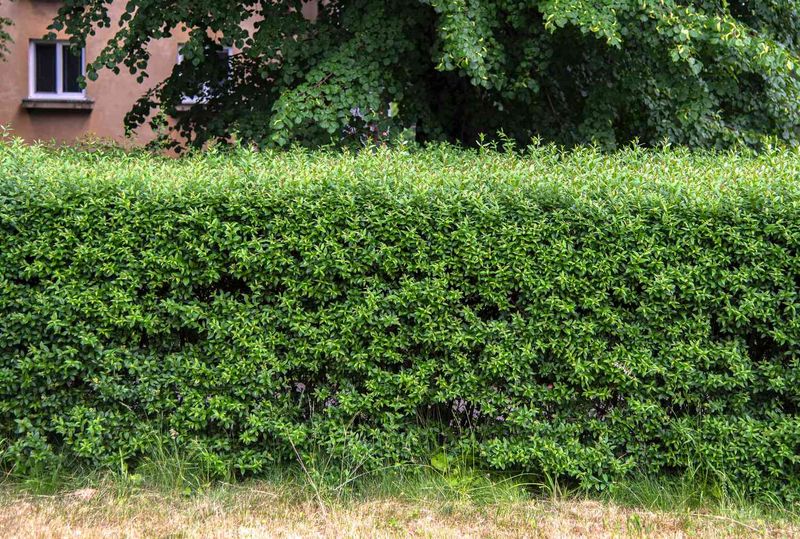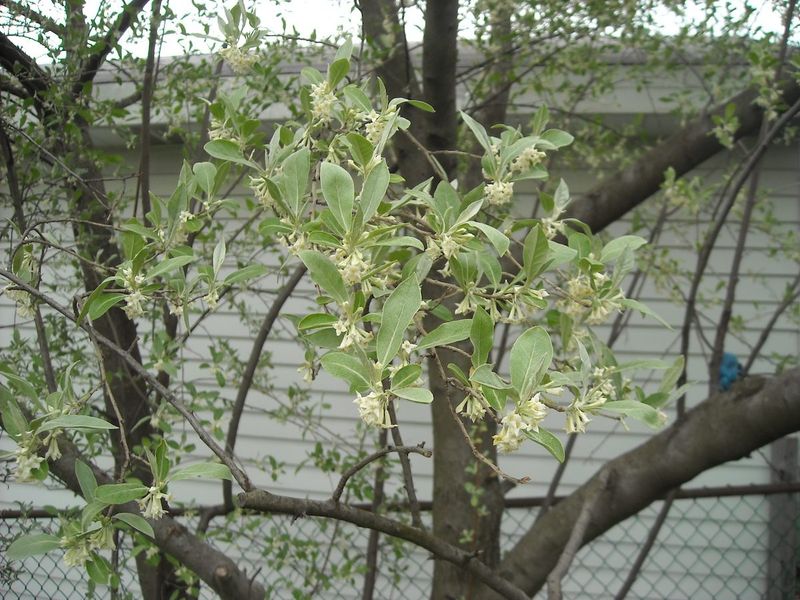Gardening should be relaxing—not a constant battle with overgrown or high-maintenance plants.
While some shrubs look stunning at first glance, they can quickly turn your peaceful garden into a source of stress. If you’re aiming for a low-fuss, beautiful yard, here are 15 shrubs you might want to skip.
1. Autumn Olive
Autumn Olive was once promoted for erosion control and wildlife habitat, but its rapid spread has made it a problem in many areas.
It fixes nitrogen in the soil, which may sound beneficial but actually disrupts native plant communities that thrive in low-nitrogen conditions.
Its aggressive nature and ability to colonize disturbed areas make it a poor choice for most gardens. Try native alternatives like elderberry, which support wildlife without taking over.
2. Scotch Broom
Scotch Broom’s bright yellow flowers may look cheerful, but the plant itself is anything but. It’s notoriously invasive, forming dense thickets that are difficult to remove and prevent native plants from thriving.
It also produces large amounts of seeds that can stay viable for years, leading to long-term maintenance issues. Instead, consider flowering natives like golden currant for similar color with far less impact.
3. Burning Bush
Burning Bush is admired for its fiery red fall foliage, but it’s a stealthy invader. This popular ornamental shrub spreads aggressively in many regions, crowding out native plants and disrupting ecosystems.
Its seeds are easily dispersed by birds, making it hard to contain once established. Opt for native shrubs like red chokeberry, which offer vibrant fall color without the ecological cost.
4. Honeysuckle
Honeysuckle offers sweet fragrance and charming flowers but grows rampantly, often overwhelming other plants and structures.
Its invasive nature can be detrimental to local ecosystems, requiring vigilant control.
For a more balanced garden, choose native flowering vines that offer fragrance without the invasion.
5. Japanese Barberry
Japanese Barberry is visually appealing but deceivingly invasive. It quickly spreads, competing with native flora and altering local ecosystems.
The shrub’s thorny branches can also create a barrier, difficult to manage once established.
Opt for native alternatives to enhance your garden’s biodiversity without the barberry’s drawbacks.
6. Rose of Sharon
Rose of Sharon brings vibrant color to a garden but can become a nuisance with its prolific self-seeding.
Its ability to spread means constant monitoring and removal are necessary to prevent it from overtaking other plants.
Opt for more contained flowering shrubs if you prefer less maintenance.
7. Butterfly Bush
While the Butterfly Bush attracts pollinators, it’s a known invader in many regions. Its ability to self-seed and spread makes it a garden challenge.
Though butterflies love it, the lack of native nectar sources can impact the local ecosystem negatively.
Consider planting native flowering shrubs to support local wildlife sustainably.
8. Forsythia
Forsythia heralds spring with golden blooms, but its rapid growth demands regular pruning.
Without frequent attention, it can become unruly, overshadowing nearby plants and requiring extra work.
Consider more manageable spring bloomers to enjoy the season without the added effort.
9. English Ivy
English Ivy brings an air of romance, but it’s a menace to your garden and home. Its climbing nature can damage walls and structures over time.
In gardens, it smothers other plants, making it hard to maintain biodiversity.
For a similar look without the hassle, try native ground covers that coexist harmoniously.
10. Nandina
Nandina, or heavenly bamboo, might seem divine with its bright berries, but it’s problematic, especially for pet owners. Its berries are toxic to animals.
Furthermore, its invasive nature threatens local flora in many regions.
To avoid these issues, explore other colorful shrubs like the serviceberry, which offers beauty and safety.
11. Rhododendron
Rhododendrons are known for their stunning blooms, but they come with a list of demands. These shrubs require acidic soil and a shady spot to thrive.
Without these conditions, they struggle, leading to disappointing blooms and sickly appearance.
For a more forgiving option, consider azaleas, which offer similar beauty with less fuss.
12. Wisteria
Wisteria enchants with its cascading blooms, but be wary of its vigorous growth. This vine can quickly overwhelm structures and trees if left unchecked.
It requires constant pruning to prevent damage, turning into a garden chore.
For easier gardening, consider less aggressive flowering vines that offer beauty without the battle.
13. Bamboo
Bamboo might evoke a sense of tranquility, but it’s far from low-maintenance. This fast-growing shrub can quickly overtake your garden space, sending shoots several feet away from the original planting.
Its invasive nature makes it difficult to control, often requiring barriers to keep it contained. Even then, it might find ways to spread.
If you crave hassle-free gardening, bamboo is best admired from afar in its natural habitat or controlled environments.
14. Privet
Privet is often used for hedges, but beware its vigorous growth. This shrub demands constant trimming to maintain shape, becoming a burden rather than a joy.
Its dense foliage can become a hiding spot for pests, adding to the maintenance woes.
Seek alternatives like boxwood if you desire neat hedges without the constant upkeep privet demands.
15. Russian Olive
The Russian Olive is an attractive option with its silver foliage, but it’s a thorny invader. It spreads aggressively, often at the expense of native plants.
Its thorns can also be a hazard in gardens, particularly for children and pets.
Choose a more garden-friendly shrub like the native willow for a similar look without the problem.
